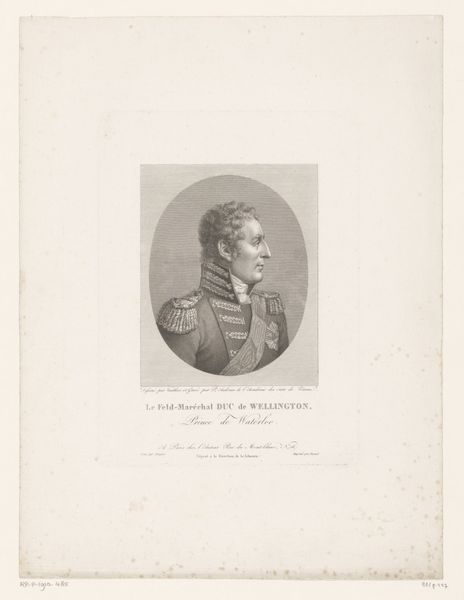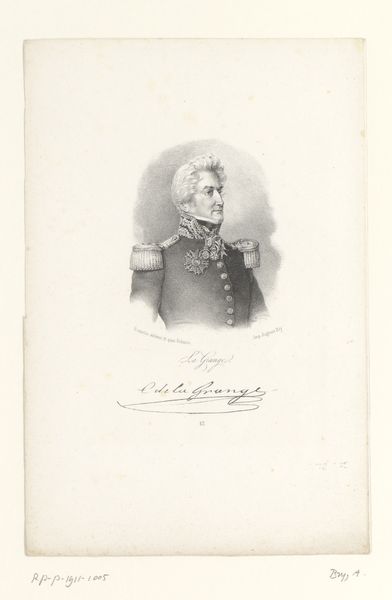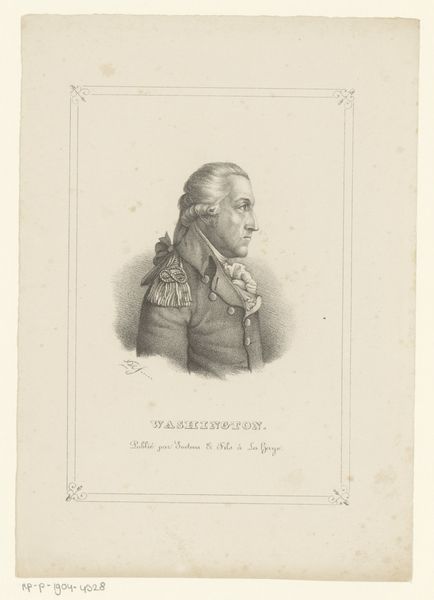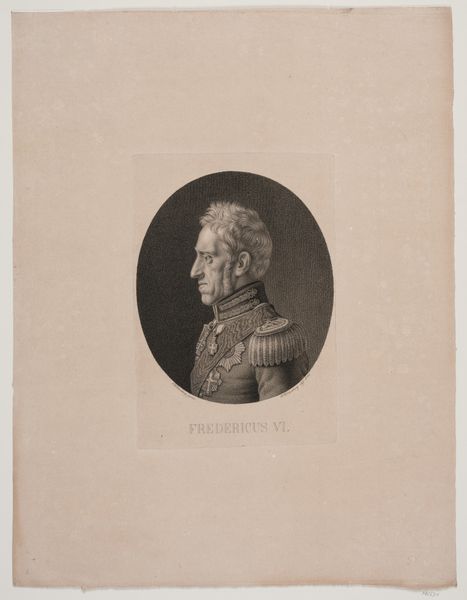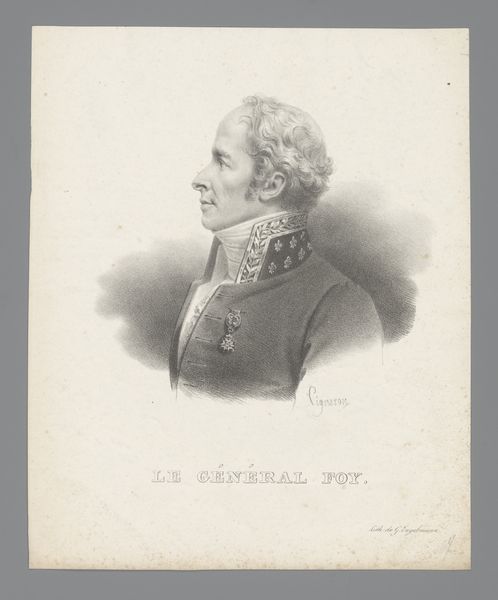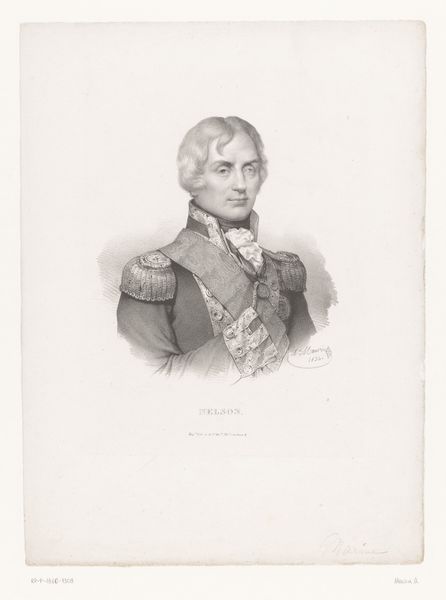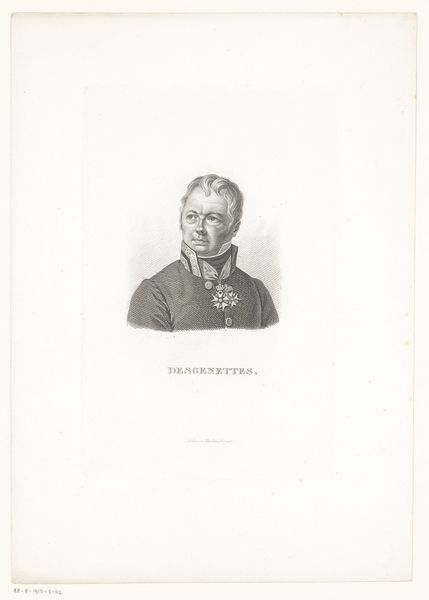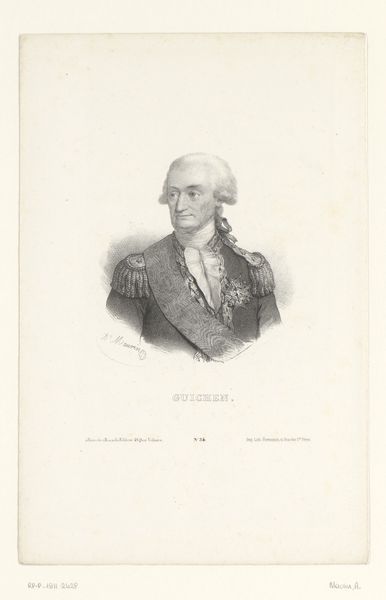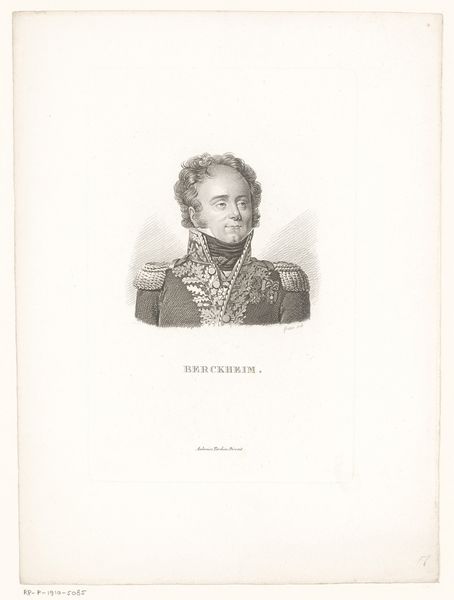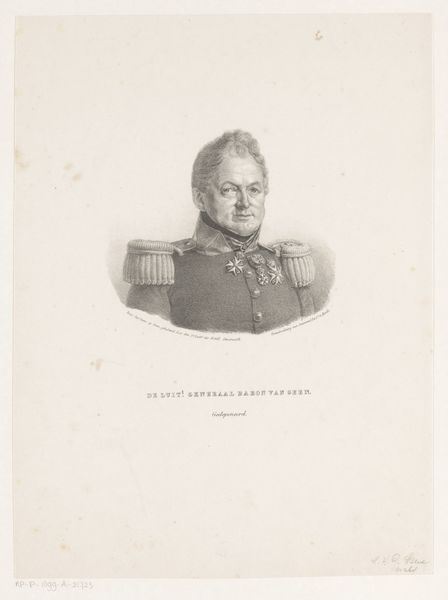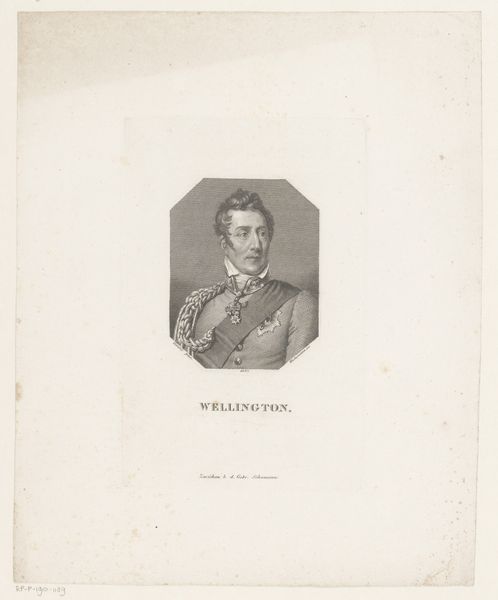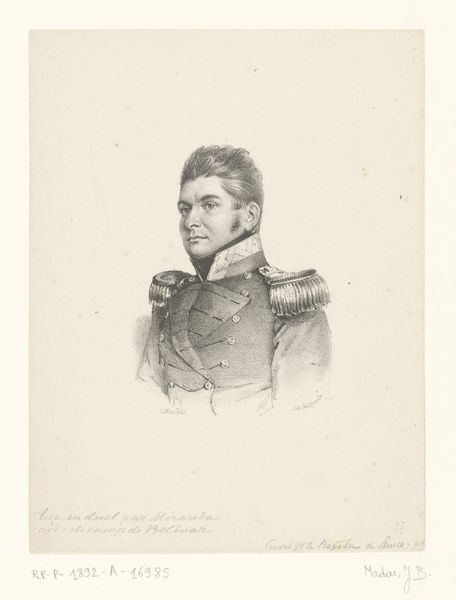
print, engraving
#
portrait
#
neoclacissism
#
light pencil work
# print
#
pencil sketch
#
light coloured
#
old engraving style
#
personal sketchbook
#
engraving
Dimensions: height 276 mm, width 180 mm
Copyright: Rijks Museum: Open Domain
This is Antoine Maurin’s portrait of Antoine Bruni d'Entrecasteaux, likely made in the first half of the 19th century. It's a lithograph, a printmaking technique that had only been invented a few decades earlier. Lithography depends on the contrast between greasy and non-greasy areas on a flat stone surface. The artist draws with a greasy crayon, and then the stone is treated so that ink only sticks to those drawn areas. The print is then made by pressing paper against the stone. What's fascinating here is how a relatively new industrial process was being used for a traditional purpose: portraiture. It's not hard to imagine how this could have been seen as a threat to the established world of painting. Yet, at the same time, it democratized image-making. Lithography made it possible to produce images quickly and in large quantities, a move away from individualized, hand-made art objects to a mass production accessible to a wider audience. Looking at this print, it's clear that even in the age of mechanical reproduction, the hand of the artist and the inherent qualities of the material still play a crucial role in creating meaning. The relationship between labor, material, and social context is key to understanding this work.
Comments
No comments
Be the first to comment and join the conversation on the ultimate creative platform.
